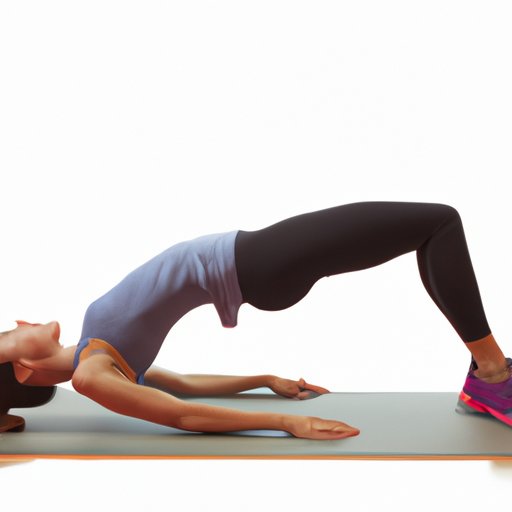Introduction
Exercise is an important part of staying fit and healthy. There are many different types of exercises you can do to work out different parts of your body. One type of exercise that is often overlooked is the bridge exercise. This article will explore what bridges are, how they can help you reach your fitness goals, and how to do them correctly.

Exploring Different Types of Bridges for Exercise Routines
Bridges are a great way to target the lower body muscles while also engaging the core. There are several different types of bridges you can do to challenge yourself and keep your workout routine interesting. Here are some of the most popular types of bridges:
Basic Bridge
The basic bridge is the simplest version of the bridge exercise. It involves lying on your back with your feet flat on the floor and your knees bent. Then, you lift your hips off the ground as high as you can and hold the position for a few seconds before lowering your hips back down.
Single Leg Bridge
The single leg bridge is similar to the basic bridge, except you only use one leg at a time. To do this exercise, start by lying on your back with your feet flat on the floor and your knees bent. Then, lift one leg off the floor and press your hips up as high as you can. Hold the position for a few seconds before lowering your hips back down and repeating with the other leg.
Glute Bridge
The glute bridge is a more advanced version of the bridge exercise that targets the glutes and hamstrings. To do this exercise, start by lying on your back with your feet flat on the floor and your knees bent. Then, press your hips up as high as you can and squeeze your glutes as you hold the position for a few seconds. Lower your hips back down and repeat.
Alternating Bridge
The alternating bridge is a challenging variation of the bridge exercise that requires coordination and balance. To do this exercise, start by lying on your back with your feet flat on the floor and your knees bent. Then, lift one leg off the floor and press your hips up as high as you can. Hold the position for a few seconds before lowering your hips back down and repeating with the other leg.
Benefits of Bridge Exercises: Why You Should Incorporate Them into Your Workout
Bridge exercises provide a number of benefits that make them a great addition to any workout routine. Here are some of the key benefits of doing bridge exercises:
Improved Core Strength
One of the primary benefits of bridge exercises is improved core strength. When done correctly, bridges engage all of the core muscles, including the abdominals, obliques, and lower back. This helps to strengthen the core, which is essential for maintaining good posture and stability.
Increased Flexibility
Bridge exercises also help to increase flexibility in the hips, glutes, and hamstrings. This increased flexibility can help improve overall performance in other exercises and activities.
Improved Posture
Doing bridge exercises regularly can help to improve posture by strengthening the muscles that support the spine. This can help to reduce pain and discomfort in the back and neck.
Enhanced Balance
Bridge exercises also help to improve balance. By engaging the muscles of the core and lower body, bridges can help to improve coordination and balance, which can be beneficial for activities such as running or playing sports.
Step-by-Step Guide to Doing a Bridge Exercise
Now that you know the benefits of bridge exercises, here is a step-by-step guide to doing them correctly:
Preparing for the Exercise
Before you start the bridge exercise, make sure you have a mat or towel to lie on. This will help to protect your back and ensure you are comfortable during the exercise.
Step-by-Step Instructions
To do the bridge exercise, start by lying on your back with your feet flat on the floor and your knees bent. Then, press your hips up as high as you can and hold the position for a few seconds. Slowly lower your hips back down and repeat.

Common Mistakes to Avoid When Doing Bridge Exercises
Even though bridge exercises are relatively simple, there are a few common mistakes you should avoid when doing them:
Not Engaging the Core
It is important to remember to engage your core when doing bridge exercises. If you don’t, you won’t get the full benefit of the exercise.
Not Using Proper Form
It is also important to maintain proper form when doing bridge exercises. Make sure your back is flat against the floor and your hips are raised as high as possible.
Not Taking Breaks
Finally, it is important to take breaks when doing bridge exercises. Take a few seconds between each repetition to rest and reset your form.
Conclusion
Bridge exercises are a great way to improve core strength, flexibility, posture, and balance. When done correctly, they can provide numerous benefits and help you achieve your fitness goals. Remember to engage your core, use proper form, and take breaks when needed. With practice, you will be able to reap the many rewards of bridge exercises.


